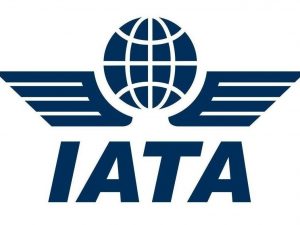Demand for domestic travel climbed 8.2% in June compared to June 2016, up slightly from the 7.9% growth seen in May. India led all markets with a 20.3% rise in domestic traffic in June. However, the very strong upward trend in traffic has slowed since the country’s unexpected ‘demonetisation’ in November 2016. India’s streak of year-on-year double-digit traffic growth may have ended with June. June capacity increased 7.0%, and load factor rose 0.9 percentage points to 84.3%. In a nutshell, air travel recorded its fastest first-half growth in 12 years, pushing load factors to record highs. And the peak northern summer travel season is likely to be record-breaking. The International Air Transport Association (IATA) announced global passenger traffic data for June showing that demand (measured in total revenue passenger kilometers or RPKs) rose by 7.8% compared to the year-ago period. “This is all good news. The demand for travel is strong and that, in turn, will make a positive contribution to the global economy. This growth will also further expose infrastructure deficiencies. In every part of the world airport and air navigation infrastructure is struggling to cope with demand. There are plenty of examples linking connectivity and economic prosperity. But few governments have been able to deliver on the imperatives of sufficient capacity, quality aligned with user needs and affordability. This year’s strong growth is a reminder that there is no time to lose,” said Alexandre de Juniac, IATA’s Director General and CEO. June capacity (available seat kilometers or ASKs) increased by 6.5%, and load factor rose 1.0 percentage point to 81.9%. For the first six months of 2017, the industry experienced a 12-year high in traffic growth (7.9%) and a …
Read More »Passenger demand hits 5-year peak in January
The International Air Transport Association (IATA) announced global passenger traffic results for January 2017 showing demand (revenue passenger kilometers) rose 9.6% compared to January 2016. This was the strongest increase in more than five years. Domestic air travel climbed 9.9% in January year-on-year. India led domestic all markets in year-to-year growth for the 22nd month in a row; January traffic soared 26.6%, marking the 15th consecutive month of 20%-plus annual growth. Demand is being stimulated by strong flight frequency. Capacity increased 8.7% and load factor was 80.1%, up 0.9% percentage points. January international passenger traffic surged 9.3% compared to the year-ago period. Capacity rose 7.5% and load factor climbed 1.3 percentage point to 80.3%. All regions recorded year-over-year increases in demand led by the Middle East and Asia Pacific. Asia Pacific carriers recorded an increase of 10.9% compared to January 2016, helped by the impact of Lunar New Year-related travel and solid growth on routes within Asia. Capacity rose 8.9%, pushing up load factor 1.5 percentage points to 81.4%. “2017 is off to a very strong start, with demand at levels not seen since 2011. This is supported by the upturn in the global economic cycle and a return to a more normal environment after the terrorism and political ‘shock’ events seen in early 2016,” said Alexandre de Juniac, IATA’s Director General and CEO. IATA estimates the holiday-related travel contributed up to one-half a percentage point in extra demand growth. January capacity rose 8.0%, and load factor climbed 1.2 percentage points to 80.2%. IATA (International Air Transport Association) represents some 265 airlines comprising 83 per cent of global air traffic.
Read More »India’s domestic traffic up by 23.3% in June
India continues to lead all markets with a 23.3 per cent rise in domestic traffic in June, propelled by strong growth in real consumer spending as well as by the fact that airlines are adding airport pairs and frequencies. This was revealed in International Air Transport Association’s (IATA) global passenger traffic data for June. Demand for domestic travel climbed 5.7 per cent this June compared to June 2015, while capacity increased 4.3 per cent, causing load factor to rise 1.1 percentage points to 83.2 pre cent. All markets reported demand increases with the exception of Brazil. Domestic RPKs account for about 36 per cent of the total market. The global passenger traffic data for June showing that demand (measured in revenue passenger kilometers or RPKs) rose by 5.2% compared to the year-ago period. This was up slightly from the 4.8% increase recorded in May (revised). However, the upward trend in seasonally-adjusted traffic has moderated since January. June capacity (available seat kilometers or ASKs) increased by 5.6%, and load factor slipped 0.3 percentage points to 80.7%. “The demand for travel continues to increase, but at a slower pace. The fragile and uncertain economic backdrop, political shocks and a wave of terrorist attacks are all contributing to a softer demand environment,” said Tony Tyler, IATA’s Director General and CEO.
Read More » Tourism Breaking News
Tourism Breaking News
